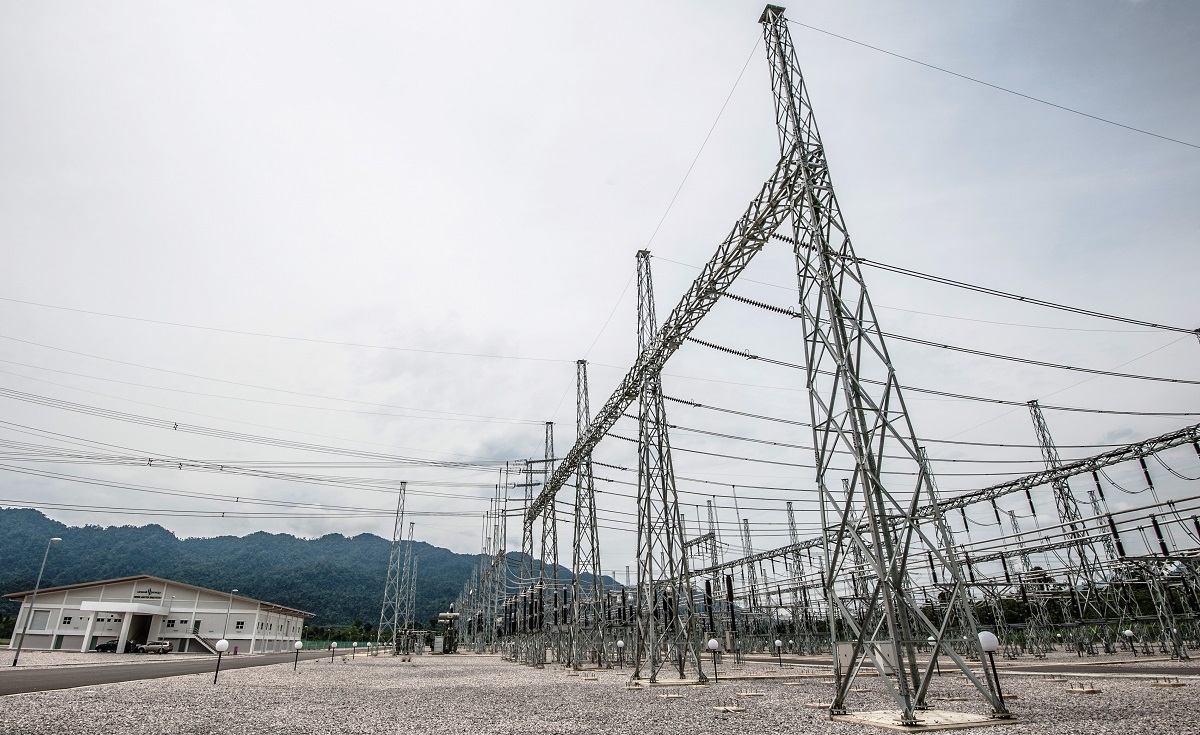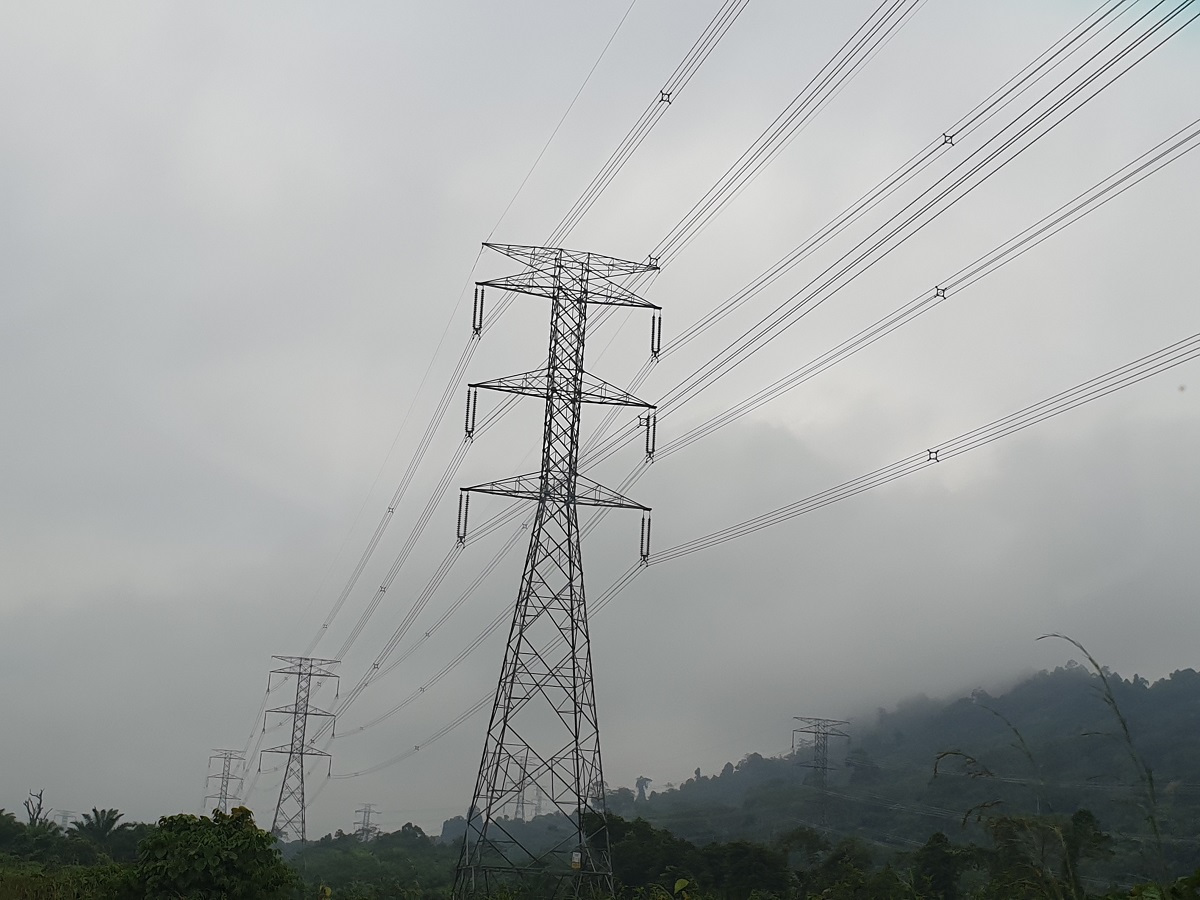

NEWS & UPDATES
Investigation Confirms Murum Transmission Line Tripping Caused By Lightning - Defence System Kicked In Immediately Enabling Progressive Supply Restoration
KUCHING
12 JULY 2021
An incident investigation by Sarawak Energy indicates that Saturday night’s major outage was caused by lightning strikes on the 275kV Murum Junction Transmission lines from Murum Hydroelectric Plant (HEP) to the Murum Junction Substation, according to data from lightning tracking and recording devices.
To protect and prevent the grid system from total collapse, the automatic load shedding mechanism kicked in at that instant for some customers to maintain the stability of the system. This effective defence mechanism of automatic load-shedding to protect Sarawak’s total power system enabled Sarawak Energy to begin progressive supply restoration within 20 minutes after the lightning strikes on the lines.
However, the investigation further concludes the tripping could have been prevented if the additional double-circuit transmission line project from Murum HEP to Samalaju-B, had been completed on schedule in 2018. The project had been delayed from the original target completion date due to blocked land access and wayleave issues and the primary cause of electrification project delays throughout Sarawak. The additional lines would have provided the necessary contingency backup to the 275kV Murum Junction Transmission line.
For further assurance and validation, the Electricity Supply regulator from the Ministry of Utilities will review and confirm the investigation.
Syed Mohamad Fauzi Shahab, Director of Electricity Supply, Ministry of Utilities said the final results of the investigation would be submitted to their office.
“A detailed investigation will be undertaken by Sarawak's Grid System Operator for submission to the Regulator. The findings are crucial for us to pinpoint any gaps in our system network in ensuring grid protection, system’s integrity and supply reliability.”
According to Sarawak Energy Group Chief Executive Officer Datu Haji Sharbini Suhaili, this was the first time a double-circuit tripping was experienced on the Murum line since it was first commissioned in 2014.
“We sincerely regret and understand the inconvenience this must have caused our customers. We are also thankful to our technical frontliners for their dedicated efforts to restore power supply to affected customers on Saturday night”.
“Sarawak Energy’s intensive multi-billion investment across our generation, transmission and distribution arms has resulted in a more modern power system. As a result, we have recorded a reduced frequency and duration of major outages in recent years especially since the completion of our Second 500kV Backbone Transmission Project. Our System Average Interruption Duration Index or SAIDI for Generation, Transmission and Distribution has improved by 70% since 2016. We recorded a new low of 73 minutes in 2020, an improvement of 29 minutes from 2019,” he said.
SAIDI records the average duration or amount of time a customer experiences interrupted power supply over a year.
“This can be further improved but the people of Sarawak continue to be denied the full assurance of a more modern power system due to obstructions to our projects by various parties including companies and individuals. Last Saturday’s incident highlights the necessity of all parties in Sarawak to work together and assist in the speedy implementation of electrification projects that are meant to benefit the rakyat,” he continued.
Lu Yew Hung, Sarawak Energy’s Group Chief Operating Officer explained the technical details of the restoration process.
”Our State Despatch Centre or SDC that manages grid supply and demand across Sarawak has remote monitoring capabilities and the team was able to locate the fault and bring the system back online. This is because of the dependable protection mechanism we have in place as part of our preparedness for uncertainties like what happened on Saturday,” he said.
The SDC detected lightning strikes at two points- 14meters apart- on the 275kV Murum Junction Transmission line which caused the double circuit tripping at 9.24pm, resulting in the outages that affected customers from Miri in the north right up to Kuching in the south.
The defence system, designed to speed up recovery time, kicked in immediately after the transmission line trippings. This initiated load shedding to major towns and cities with supply maintained to critical facilities like hospitals as the system gradually came back online. Load shedding allows electricity consumption to be distributed and prioritised across multiple power sources to reduce the stress on the main system until full recovery.
“When the Murum system was suddenly disconnected, it caused a disturbance to the main system in terms of system frequency. There was a sudden loss of generation and to protect the grid system and prevent its collapse, we began under frequency load shedding (UFLS) which causes temporary interruptions,” he explained.
Sarawak Energy was able to initiate load shedding via under-frequency protection to maintain generation-load balance and prevent total grid failure. Other major generation plants were also protected from impact and this sustained the main grid with an available generation of 3032MW. This enabled quick restoration and system stabilisation.
About 70% supply restoration was achieved within the first hour and almost full restoration achieved by 10.30pm through progressive remote restoration to the affected areas. The remaining localised areas requiring manual restoration by technical teams were able to be reconnected early Sunday morning.
“The protection mechanism allowed the team to take necessary corrective actions to recover fast. We continue to explore and improve on power system protection to ensure greater reliability of supply to our customers,” Lu said.
According to Executive Vice President for Project Delivery, Ir. Pramod Kumar Karunakaran, the completion of the crucial two lines from Murum to Samalaju B would have prevented the islanding of Murum Power Station following the double circuit tripping of Murum Junction lines.
“This project was originally planned for completion by end of 2018 but we are facing delays due to wayleave issues. We are still working to resolve this issue in hopes that we can complete this second transmission line in 2022”.
“If plantations and timber companies as well as other land claimants continue to obstruct key State infrastructure developments, Sarawakians will continue to be denied the full benefits of a more modern power system, “ said Pramod.
For the transmission line project from Murum to Samalaju-B, Sarawak Energy is facing wayleave issues from Sebekai Plantation Sdn Bhd.
“We continue to appeal for the understanding and cooperation of the land claimants so we can successfully complete these critical infrastructure project as soon as possible. Projects to continuously modernise the electricity infrastructure must be completed on schedule and on budget. All this is meant to strengthen Sarawak’s electricity supply network system for the benefit of the people of Sarawak,” concluded Sharbini.
Sarawak has not experienced a major outage since the completion of the critical parts of RM2.7 billion Second Transmission Backbone 500KV Project but this project was also delayed due to obstruction by land claimants along the route of the transmission lines The last mile of this project is the Lachau to Tondong section that has yet to be energised having been delayed for over five years due to excessive land claims from several individuals, despite the majority of landowners having already agreed.
Sarawak Energy also faced similar wayleave issues for the 30KM 275kV Balingian-Selangau transmission lines which was critical to channel supply from the Balingian power plant’s substation to Selangau substation to strengthen and reinforce the state power grid as well as the local supply network. This has since been completed and energised.


Murum Junction Substation


275kV Murum Transmission Lines


Datu Haji Sharbini Suhaili, Sarawak Energy Group CEO